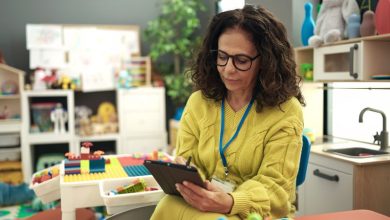Transforming the school library for innovative learning
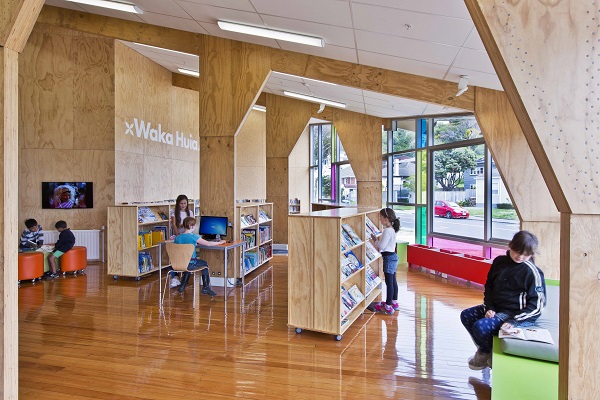
The joy of reading is something that stays with someone for life and for many, this joy has its roots in the school library. Reading for pleasure is also inextricably linked with higher achievement and social mobility, making the school library a place of great importance in a child’s life.
While the end goal is the same, the layout of today’s library has changed considerably from even a few years ago to accommodate high demand for technology and the shift from a quiet space to a learning hub for both groups and individuals. It is imperative, therefore, that the design and resourcing of the school library is meticulously planned by those with expert knowledge.
School News spoke to industry insiders for advice on refitting the school library.
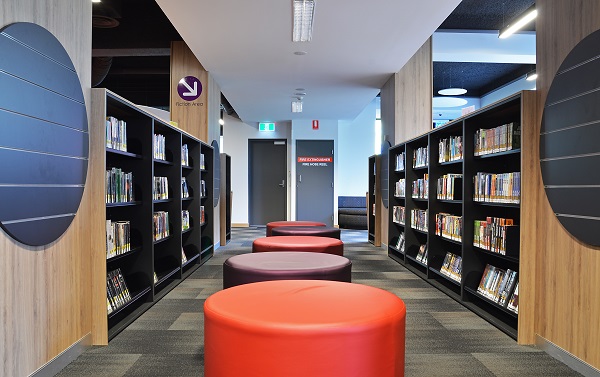
Consider your space
Start by looking at your space, advises Scott Reed from Resource Furniture, suppliers to hundreds of school libraries across Australia. “Consider any distinguishing features of the building or space that could be highlighted, and any window views that could be utilised to create pleasant, relaxed reading spaces.”
Case study: Albany Senior High School, Auckland
The history of the library at Auckland’s Albany Senior High School (ASHS) is in two parts; when the school was originally built, the college was housed in temporary prefabs on the site of the junior school.
This was no small challenge for the school to manage; careful consideration was required to ensure the school could provide a temporary working library with shelving that could be extended and transferred to the permanent location.
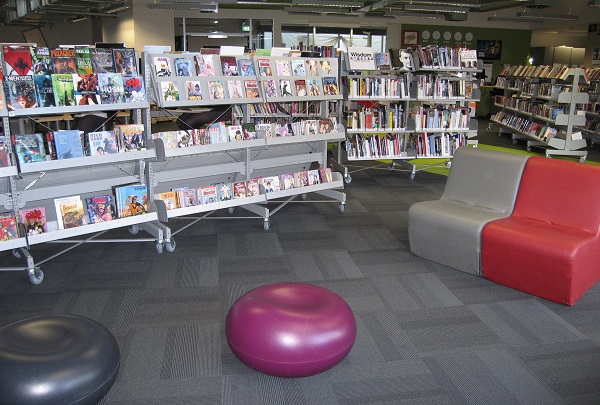
Fortunately the school had exceptional guidance from both its librarian, Sharon Jackson, and its shelving supplier, Hydestor. Ms Jackson had previously been a library cluster manager with Auckland public libraries and has a wealth of knowledge in building up collections. She had also worked previously with Hydestor and it was this collaboration of client and supplier, both with expert knowledge, that allowed for a smooth transition.
“Creating a modern, flexible, innovative and inviting school library is always a daunting task, and the choice of library shelving is a key component in its success,” says Ms Jackson. “We have a relatively small space so we required flexibility (shelving on wheels), and we wanted to maximise display opportunities, and to allow for growth and versatility.” After an in-depth consultation on-site, the shelving specialists recommended a mix of solutions from two of its ranges – corporate and tertiary library, and shelving for school libraries. This provided accommodation for both fiction and non-fiction, with a heavy emphasis on flexible rollaway shelving and face-out display in the fiction and graphics collections.
“Every school is unique and requires a customised school library shelving solution,” says Chris Pooley for Hydestor. “Each library layout requires the technical input from a huge knowledge pool including school staff and the Hydestor team. Schools will not be working on their own, we work together to design a space that is unique to each school’s collection and which takes advantage of all the space available.”
Mr Pooley says Hydestor consultants are well versed in the individual concepts and idiosyncrasies of libraries and can aid schools to create interactive literary environments which are enticing, accessible and highly visible. ”The Hydestor team have been invaluable in offering innovative solutions to make our vision a reality,” says Ms Jackson. “I’ve truly appreciated their professionalism, product knowledge and on-going support.”
The company provides a space planning consultancy service to evaluate the library space and create a space for people to connect, explore and learn. “We work out flow of traffic, create fun and interesting reading nooks and breakout spaces, provide a range of options for seating and standing, and ensure there is sufficient space for PC and own device plug in,” says Mr Reed.
“The contemporary learning space requires innovative thinking to complement interaction and engagement with students,” says Trevor McCann from library design and solutions company Raeco. “Setting up zones such as quiet reading, learning, discussion, breakout areas to plan and play are important examples to enhance student learning experience.”
Shelving
“The school library is now more of a multi-purpose classroom and has island shelving units on castors,” says Karen Hansen from shelving suppliers Lundia. “These can be moved easily to create breakout areas and for group workshops.”
Of chief consideration is the accommodation for books. How many shelves? What type? And what height? Most consultants will be able to provide guidance on the amount and types of shelving required once they are supplied with book collection numbers.
The number of choices for shelving is vast both for style – rollaway, wall mounted, floating, curved and shuttle, and for construction – steel, natural timber and acrylic.
All suppliers agree that there has been a shift to face-out display not only in emerging readers and picture books, but in graphics and fiction too. “For some time now we have been supplying a shelving system that displays the books facing out, not like before boring old spines,” says Darrin Batty from Fry Library. “This reduces wear and tear on the books and the kids love seeing the bright illustrations. It’s also a win for librarians as face-out displays are easier to re-shelve. We are also putting non fiction books and series books into browser bins which serve as a space saver.”
Chris Pooley at shelving specialists Hydestor says: ”A review of enhancing sections of the non fiction collection has seen the option of taking selected Dewey categories and treating them like sophisticated picture books and providing them in a face-out display mode. The logic is if children aren’t able to select books via Dewey from a spine-out view, they can choose them by seeing the covers; think of all those popular topics in non fiction such as dinosaurs and volcanoes.”
There is also a high demand for mobile shelving, especially curved units, which have a middle division to stop the books from falling back, says Mr Batty. “They require no installation, are easy to move even when fully loaded, and can be used to create quiet areas and different shapes in the library.” Acrylic spinners are a popular choice for novels and DVDs, as are acrylic-fronted bookcases for picture books.
Versatility of shelving units is essential, says Mr Reed. “We (Resource) have developed a steel shelf that transforms from a standard flat shelf, into a display shelf, a picture book tub and a CD/DVD shelf. This allows any shelf type to be completely interchangeable between any unit in the library and provides great flexibility.”
Furniture
“Today’s libraries areas are for communal work and independent study so are equipped with large tables and booth seating,” says Doug Stewart from Quantum Libraries.
And furniture needs to be easy to move so that spaces can be re-worked according to group size and use. “Flexible, modular furniture is essential, says Mr Reed, and today’s school furniture is fun for users. “Breakout soft seating that is easy to move and re-configure is proving very popular.”
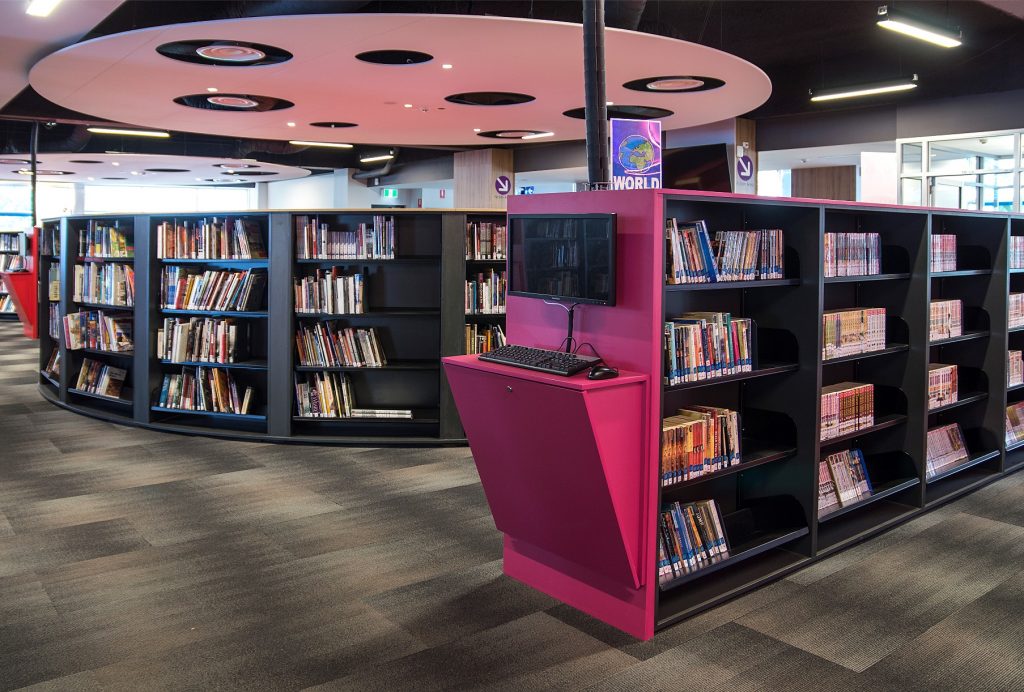
Schools are also asking for nesting tables and mobile flip tables, both of which can be used for collaborative work yet easily pulled apart for small groups or independent study. And as laptops and tablets find their way into the hands of even the smallest customers, demand for chairs and tables with integrated power continues to rise.
Mr Stewart encourages clients to ask where the product is manufactured, and how long it can be expected to last. “Check whether the supplier will be able to help if you have any problems with the product, and always ask if it is designed for your requirements as some companies will try to apply generic solutions.”
At Raeco, Mr McCann says that schools need to ask their supplier whether the new learning environment will encourage engagement and interaction. “Is the furniture agile and flexible for a learning space? Can they provide a learning environment that encourages engagement and interaction?”
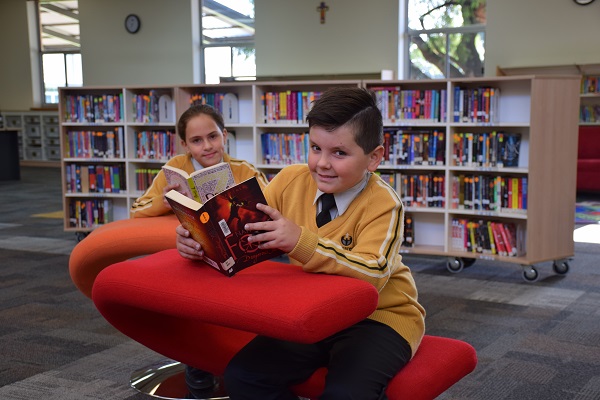
Acoustics
With the shift away from libraries being quiet zones to multi-purpose digital learning environments, the consideration of acoustics for ceilings and walls is becoming a necessity.
Ecoplus Systems’ general manager, Paul Sowry, says acoustic treatments which have been engineered to absorb noise and reverberation can be fitted. Ceiling tiles can also be supplied with a seismic grid, as a safety feature, in areas prone to earthquakes.
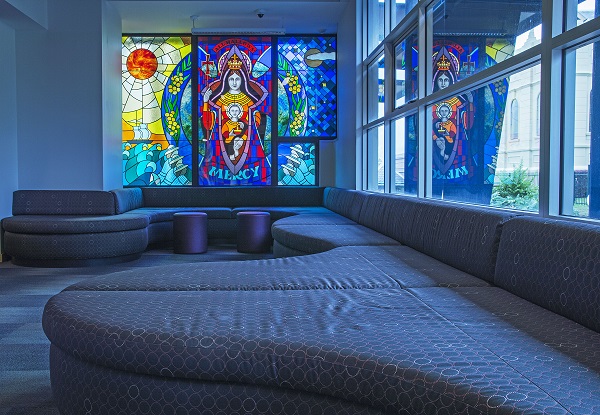
Staff at NZ Acoustics consult with many schools to help them create learning spaces where groups can work collaboratively without noise negatively impacting on independent learners. Spokesman Nigel Spiers says the first port of call is always the ceiling. “That is the cause of most room excess sound reverberation and noise. It is also much easier to treat a ceiling as you are not limited by windows, doors, shelves and other fittings and you are not taking up valuable wall space, and it is much more cost effective to treat ceilings rather than walls or floors. As a guideline, $1,000 of acoustic ceiling panels correctly positioned will make a significant improvement to the acoustics of any small to medium-sized library room.”
Mr Spiers advises that installing thin acoustic panels will only absorb a moderate amount of high frequency sounds: “To absorb male and female voices, chair scrapes and lower frequency sounds requires 50mm thick acoustic panels.”
Flooring
Choice of flooring will also impact on the library’s acoustics. “Libraries and learning spaces need specific treatments to reduce noise in order to maximise learning opportunities,” says Kahu Goulton from Heritage Carpets Ltd. However, some of these treatments can be very expensive. “Acoustic-backed carpet tiles are a cost effective and attractive way to contribute to the space’s acoustic performance.
Ms Goulton recommends checking several aspects: sound absorption, impact noise reduction, cost and performance.
Wired for learning
All libraries require extensive provision for learners with laptops and tech devices, and new furniture includes choices of tables and seating with integrated power.
“Booth seating with built-in power is popular with more and more people bringing their own devices and requiring power and data facilities,” says Mr Reed from Resource. “This also coincides with the increased need for laptop/tablet tables that hook around seating to provide a little working surface.”
Questions to consider
Space
- What are the distinguishing features of your library space?
- Are they being utilised?
- Are there views to consider?
- Is there sufficient lighting?
- Does the flooring need replacing?
- Are the wall colours suitable?
- Do the acoustics need improving?
Signage
- Do you have prominent signage?
- Are the service points clearly signed?
- Would you like to incorporate wall graphics?
Collection
- Can the collection be weeded?
- What are the collection numbers?
- What is the percentage on loan?
Circulation pods
- How many circulation pods are required?
- Would you like the option of sit and stand height pods?
- Would you like to incorporate electric height adjustable pods?
- Do you require storage? ie. Door for hard drive, drawers etc.
Breakout furniture
- What type of soft seating would you like to include? ie. Individual chairs, ottomans, booths, incorporated power and data etc.
- What type of tables do you prefer? ie. Round tops with pedestal base, mobile flip tables etc.
- How many chairs per table would you prefer?
- Do you require tables and chairs for outdoor use?
Enviro solutions for library storage
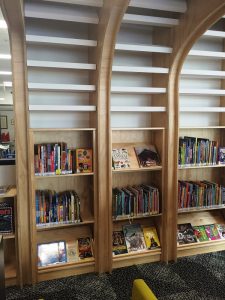 Lundia, a shelving specialist company in New Zealand, has been supplying storage solutions for more than 50 years.
Lundia, a shelving specialist company in New Zealand, has been supplying storage solutions for more than 50 years.
Lundia’s static shelving is built from plantation-grown, sustainably harvested Radiata Pine and are verified by EnviroSpec. This means that using these products can help you achieve Green Star rating for your fit outs.
New and refurbished schools themselves are now being rolled out with good design in mind that demands high quality product, says Lundia spokesman Karen Hansen. “Lundia is being chosen as a preferred product as it provides a difference from what has been on offer in the past. Ms Hansen says Lundia “sticks to what they are good at” – shelving and storage for soft and hard cover books, big books, picture books, magazines and puzzles.
Lundia can get on board with school library fit outs at any point from working with the architect at the initial design stage. They consult directly with schools, and manage the full project.






